Before European settlement, grassy box woodlands covered millions of hectares between southern Queensland and northern Victoria. The woodlands were made up of a number of different eucalypt species, including Yellow Box (Eucalyptus melliodora), Grey Box (Eucalyptus microcarpa), and White Box (Eucalyptus alba), with an understorey of Kangaroo Grass, Snow Grass, Wallaby Grasses and abundant wild flowers such as Yam Daisies and Chocolate Lilies.
|
On the south and central west slopes of New South Wales there are only four known remnants of White Box woodlands in which both trees and understorey are intact. Without the efforts of CPBR researchers, and co-operation from the Rural Lands Protection Board, this site would have been lost. |
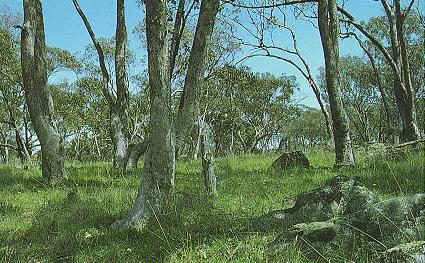
|
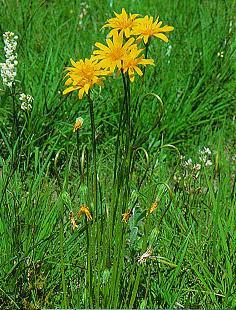
|
The native Yam Daisy (Microseris scapigera) was once abundant aboriginal food. It is now only found in ungrazed woodlands. |
Almost all of these woodlands have been cleared for cropping or are grazed by sheep or cattle. Scattered trees remain, but native understorey has been eliminated from most sites. Researchers are studying the ecology and genetics of remnant grassy White Box (Eucalyptus albens) woodlands, to develop a strategy for conserving, rehabilitating and manging the valuable and threatened woodland ecosystem.
Despite their wide distribution, little is known about the White Box woodlands. Dr Suzanne Prober is piecing together the original composition and natural variation in the woodlands by locating and surveying good quality remnants in NSW.
|
Distribution maps illustrating the depletion of White Box woodlands over the past century from New South Wales. |
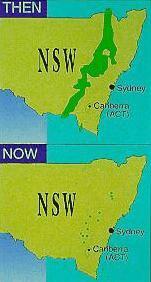
|
Although small and isolated, these remnants often have a high species diversity - for example 72 native plant species in a 1.7 hectare site. There is a gradual differentiation in the understorey from the south to the north of the state, and this would best be conserved by a wide geographic spread of reserves.
In order to conserve the woodlands it is important to ensure that the genetic diversity of each of the woodland species is maintained. Genetic studies show that genetic diversity, within populations of White Box, is naturally very high, and that populations of at least 500 individuals are needed to maintain this diversity.
Variation between populations of White Box is relatively low, although it is still an important factor in planning reserves. Research on genetic diversity is also focusing on the Yam Daisy, an important understorey herb.
The native understorey plants of the woodlands are extremely sensitive to grazing, ploughing and fertilizing. If any of these disturbances occur, most natives are replaced by weeds and pasture legumes and grasses, and in extreme cases (as in most farm paddocks) only a few, tough native species remain. Therefore, it is important to ensure that livestock grazing does not occur in remnant woodland.
Most of the good-quality woodland remnants are found in little-used country cemeteries or on railway embankments scattered across New South Wales. This is because they are the only pieces of land that were fenced from livestock more than 100 years ago, when the country was being settled. Although small and disjointed, the remnants contain a high species diversity, and could form the core of a "grassy White Box woodlands reserve".
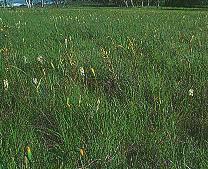
|
Although trees have been removed from cemetery sites such as this one at Monteagle, the native understorey has been preserved in its close to original condition. |
This "reserve" could be achieved by linking sites together by agreement of the current tenure-holders, for example using the New South Wales Conservation Agreement Scheme, and would not require tenure to be transferred to a single body. Some Councils and Landcare groups already recognise the significance of their grassy woodland remnants, and have agreed to maintain them for their conservation value.
|
Important railway remnants are threatened by new management practices such as herbicide spraying and grazing. In the past control burning of railway easements favoured the native understorey. |
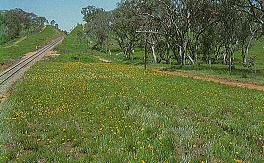
|
As there are so few high quality remnants, 40 hectares in total, additional larger sites of medium quality could be added to this "reserve". Little-used travelling stock reserves have high conservation potential because, although they have usually been invaded by weeds, they still contain many native grasses and herbs. Future research will concentrate on rehabilitating sites like these.
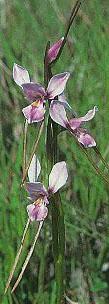
|
Dr Suzanne Prober
Phone (02) 6246 5108 |

|